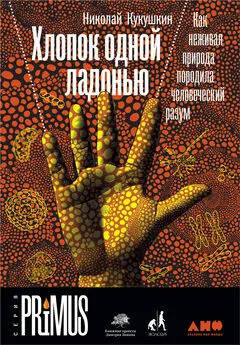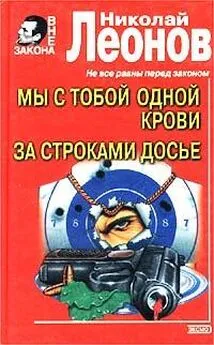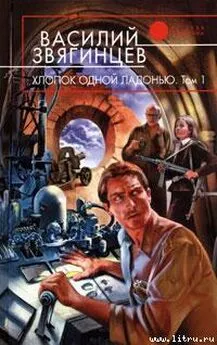Николай Кукушкин - Хлопок одной ладонью
- Название:Хлопок одной ладонью
- Автор:
- Жанр:
- Издательство:Альпина нон-фикшн
- Год:2020
- Город:Москва
- ISBN:978-5-0013-9315-3
- Рейтинг:
- Избранное:Добавить в избранное
-
Отзывы:
-
Ваша оценка:
Николай Кукушкин - Хлопок одной ладонью краткое содержание
Оказывается, в человеческом страдании виноваты динозавры, легкие существуют благодаря лишайникам, а главным событием в жизни наших предков за последний эон было превращение в червей. «Хлопок одной ладонью» – это история человека и его внутреннего мира, вмещающая в себя весь путь от неорганических молекул до возникновения языка и рассказанная так, будто это рыцарский роман или мифический эпос.
Хлопок одной ладонью - читать онлайн бесплатно ознакомительный отрывок
Интервал:
Закладка:
15. Tononi, G. & Cirelli, C. Sleep and the price of plasticity: from synaptic and cellular homeostasis to memory consolidation and integration. Neuron 81, 12–34, doi:10.1016/j.neuron.2013.12.025 (2014).
16. Liu, Z.-W., Faraguna, U., Cirelli, C., Tononi, G. & Gao, X.-B. Direct evidence for wake-related increases and sleep-related decreases in synaptic strength in rodent cortex. Journal of Neuroscience 30, 8671–8675 (2010).
17. Babkoff, H., Sing, H. C., Thorne, D. R., Genser, S. G. & Hegge, F. W. Perceptual distortions and hallucinations reported during the course of sleep deprivation. Percept Mot Skills 68, 787–798, doi:10.2466/pms.1989.68.3.787 (1989).
18. Siegel, R. K. & West, L. J. Hallucinations: Behavior, experience, and theory (John Wiley & Sons, 1975).
19. West, L. J., Pierce, C. M. & Thomas, W. D. Lysergic Acid Diethylamide: Its Effects on a Male Asiatic Elephant. Science 138, 1100–1103, doi:10.1126/science.138.3545.1100 (1962).
20. Siegel, R. K. LSD-induced effects in elephants: Comparisons with musth behavior. Bulletin of the Psychonomic Society 22, 53–56, doi:10.3758/BF03333759 (1984).
21. de Vivo, L. et al. Ultrastructural evidence for synaptic scaling across the wake/sleep cycle. Science 355, 507–510, doi:10.1126/science.aah5982 (2017).
22. Stickgold, R., Hobson, J. A., Fosse, R. & Fosse, M. Sleep, learning, and dreams: off-line memory reprocessing. Science 294, 1052–1057, doi:10.1126/science.1063530 (2001).
23. Siegel, J. M. The stuff dreams are made of: anatomical substrates of REM sleep. Nature neuroscience 9, 721 (2006).
24. Englot, D. J. A modern epilepsy surgery treatment algorithm: Incorporating traditional and emerging technologies. Epilepsy Behav 80, 68–74, doi:10.1016/j.yebeh.2017.12.041 (2018).
25. Penfield, W. & Rasmussen, T. The cerebral cortex of man; a clinical study of localization of function (Macmillan, 1950).
26. Penfield, W. The interpretive cortex; the stream of consciousness in the human brain can be electrically reactivated. Science 129, 1719–1725, doi:10.1126/science.129.3365.1719 (1959).
27. Bartolomei, F. et al. Cortical stimulation study of the role of rhinal cortex in deja vu and reminiscence of memories. Neurology 63, 858–864, doi:10.1212/01.wnl.0000137037.56916.3f (2004).
28. Graziano, M. S. A., Taylor, C. S. R. & Moore, T. Complex Movements Evoked by Microstimulation of Precentral Cortex. Neuron 34, 841–851, doi: https://doi.org/10.1016/S0896–6273 (02) 00698–0(2002).
29. Friston, K. A theory of cortical responses. Philos Trans R Soc Lond B Biol Sci 360, 815–836, doi:10.1098/rstb.2005.1622 (2005).
30. Harris, K. D. & Mrsic-Flogel, T. D. Cortical connectivity and sensory coding. Nature 503, 51–58, doi:10.1038/nature12654 (2013).
31. Ts'o, D. Y., Gilbert, C. D. & Wiesel, T. N. Relationships between horizontal interactions and functional architecture in cat striate cortex as revealed by cross-correlation analysis. J Neurosci 6, 1160–1170 (1986).
32. Buzas, P. et al. Model-based analysis of excitatory lateral connections in the visual cortex. J Comp Neurol 499, 861–881, doi:10.1002/cne.21134 (2006).
33. Fiorani Junior, M., Rosa, M. G., Gattass, R. & Rocha-Miranda, C. E. Dynamic surrounds of receptive fields in primate striate cortex: a physiological basis for perceptual completion? Proc Natl Acad Sci USA 89, 8547–8551, doi:10.1073/pnas.89.18.8547 (1992).
34. Sirosh, J. & Miikkulainen, R. Cooperative self-organization of afferent and lateral connections in cortical maps. Biological Cybernetics 71, 65–78, doi:10.1007/BF00198912 (1994).
35. O'Reilly, R. C. & Rudy, J. W. Conjunctive representations in learning and memory: principles of cortical and hippocampal function. Psychol Rev 108, 311–345, doi:10.1037/0033-295x.108.2.311 (2001).
36. Isaacson, J. S. & Scanziani, M. How inhibition shapes cortical activity. Neuron 72, 231–243, doi:10.1016/j.neuron.2011.09.027 (2011).
37. Dorrn, A. L., Yuan, K., Barker, A. J., Schreiner, C. E. & Froemke, R. C. Developmental sensory experience balances cortical excitation and inhibition. Nature 465, 932–936, doi:10.1038/nature09119 (2010).
38. Benchenane, K., Tiesinga, P. H. & Battaglia, F. P. Oscillations in the prefrontal cortex: a gateway to memory and attention. Curr Opin Neurobiol 21, 475–485, doi:10.1016/j.conb.2011.01.004 (2011).
39. Mumford, D. On the computational architecture of the neocortex. Biological cybernetics 66, 241–251 (1992).
40. Mumford, D. On the computational architecture of the neocortex. Biological cybernetics 65, 135–145 (1991).
41. Teyler, T. J. & DiScenna, P. The hippocampal memory indexing theory. Behavioral neuroscience 100, 147 (1986).
42. Tanaka, K. Z. et al. Cortical representations are reinstated by the hippocampus during memory retrieval. Neuron 84, 347–354 (2014).
43. Wallenstein, G. V., Hasselmo, M. E. & Eichenbaum, H. The hippocampus as an associator of discontiguous events. Trends in Neurosciences 21, 317–323, doi: https://doi.org/10.1016/S0166–2236 (97) 01220–4(1998).
44. Bota, M., Sporns, O. & Swanson, L. W. Architecture of the cerebral cortical association connectome underlying cognition. Proc Natl Acad Sci USA 112, E2093–2101, doi:10.1073/pnas.1504394112 (2015).
45. van den Heuvel, M. P. & Sporns, O. Rich-club organization of the human connectome. J Neurosci 31, 15775–15786, doi:10.1523/JNEUROSCI.3539–11.2011 (2011).
46. Rebola, N., Carta, M. & Mulle, C. Operation and plasticity of hippocampal CA3 circuits: implications for memory encoding. Nat Rev Neurosci 18, 208–220, doi:10.1038/nrn.2017.10 (2017).
47. Sharon, T., Moscovitch, M. & Gilboa, A. Rapid neocortical acquisition of long-term arbitrary associations independent of the hippocampus. Proc Natl Acad Sci USA 108, 1146–1151, doi:10.1073/pnas.1005238108 (2011).
48. Morris, R. G. M., Garrud, P., Rawlins, J. N. P. a. & O'Keefe, J. Place navigation impaired in rats with hippocampal lesions. Nature 297, 681 (1982).
49. Rasch, B. & Born, J. Maintaining memories by reactivation. Curr Opin Neurobiol 17, 698–703, doi:10.1016/j.conb.2007.11.007 (2007).
50. Frankland, P. W. & Bontempi, B. The organization of recent and remote memories. Nat Rev Neurosci 6, 119–130, doi:10.1038/nrn1607 (2005).
51. Callaway, E. M. Feedforward, feedback and inhibitory connections in primate visual cortex. Neural Netw 17, 625–632, doi:10.1016/j.neunet.2004.04.004 (2004).
52. Kok, P., Bains, L. J., van Mourik, T., Norris, D. G. & de Lange, F. P. Selective Activation of the Deep Layers of the Human Primary Visual Cortex by Top-Down Feedback. Curr Biol 26, 371–376, doi:10.1016/j.cub.2015.12.038 (2016).
53. Elhilali, M. & Shamma, S. A. A cocktail party with a cortical twist: how cortical mechanisms contribute to sound segregation. J Acoust Soc Am 124, 3751–3771, doi:10.1121/1.3001672 (2008).
54. Kerlin, J. R., Shahin, A. J. & Miller, L. M. Attentional gain control of ongoing cortical speech representations in a «cocktail party». J Neurosci 30, 620–628, doi:10.1523/JNEUROSCI.3631–09.2010 (2010).
55. Northover, S. B., Pedersen, W. C., Cohen, A. B. & Andrews, P. W. Artificial surveillance cues do not increase generosity: two meta-analyses. Evolution and Human Behavior 38, 144–153, doi: https://doi.org/10.1016/j.evolhumbehav.2016.07.001(2017).
56. Dear, K., Dutton, K. & Fox, E. Do 'watching eyes' influence antisocial behavior? A systematic review & meta-analysis. Evolution and Human Behavior 40, 269–280, doi: https://doi.org/10.1016/j.evolhumbehav.2019.01.006(2019).
57. Nickerson, R. S. Confirmation bias: A ubiquitous phenomenon in many guises. Review of general psychology 2, 175–220 (1998).
58. Казанцева А. Кто бы мог подумать! Как мозг заставляет нас делать глупости . – М.: Corpus, 2014.
59. Shipp, S., Adams, R. A. & Friston, K. J. Reflections on agranular architecture: predictive coding in the motor cortex. Trends in neurosciences 36, 706–716 (2013).
60. Adams, R. A., Shipp, S. & Friston, K. J. Predictions not commands: active inference in the motor system. Brain Structure and Function 218, 611–643 (2013).
61. Thomson, E. E., Carra, R. & Nicolelis, M. A. Perceiving invisible light through a somatosensory cortical prosthesis. Nat Commun 4, 1482, doi:10.1038/ncomms2497 (2013).
1. Sacks, O. Awakenings (Pan Macmillan, 1991).
2. Italie, H. Taking Nothing for Granted: The Short, Tragic «Awakening» of Rose R. , < https://apnews.com/e40abbab7d5927ba2fb5553a26d00b6f> (1991).
3. Beier, K. T. et al. Circuit Architecture of VTA Dopamine Neurons Revealed by Systematic Input-Output Mapping. Cell 162, 622–634, doi:10.1016/j.cell.2015.07.015 (2015).
4. Kandel, E. R. Principles of neural science (2013).
5. Schultz, W., Dayan, P. & Montague, P. R. A neural substrate of prediction and reward. Science 275, 1593–1599, doi:10.1126/science.275.5306.1593 (1997).
6. Roesch, M. R., Calu, D. J. & Schoenbaum, G. Dopamine neurons encode the better option in rats deciding between differently delayed or sized rewards. Nat Neurosci 10, 1615–1624, doi:10.1038/nn2013 (2007).
7. Zaghloul, K. A. et al. Human substantia nigra neurons encode unexpected financial rewards. Science 323, 1496–1499, doi:10.1126/science.1167342 (2009).
8. Carr, D. B. & Sesack, S. R. Projections from the Rat Prefrontal Cortex to the Ventral Tegmental Area: Target Specificity in the Synaptic Associations with Mesoaccumbens and Mesocortical Neurons. The Journal of Neuroscience 20, 3864, doi:10.1523/JNEUROSCI.20-10-03864.2000 (2000).
9. Frankopan, P. The Silk Roads: A New History of the World (Bloomsbury, 2015).
10. Friston, K., Thornton, C. & Clark, A. Free-energy minimization and the dark-room problem. Frontiers in psychology 3, 130 (2012).
11. Clark, A. Whatever next? Predictive brains, situated agents, and the future of cognitive science. Behavioral and brain sciences 36, 181–204 (2013).
12. Barrett, L. F. & Simmons, W. K. Interoceptive predictions in the brain. Nat Rev Neurosci 16, 419–429, doi:10.1038/nrn3950 (2015).
13. Bastos, A. M. et al. Canonical microcircuits for predictive coding. Neuron 76, 695–711 (2012).
1. Everett, D. & Everett, D. L. Don't Sleep, There are Snakes: Life and Language in the Amazonian Jungle (Profile, 2009).
2. Colapinto, J. The Interpreter: Has a remote Amazonian tribe upended our understanding of language? The New Yorker (2007).
3. Sakel, J. Acquiring complexity: The Portuguese of some Pirahã men. Linguistic Discovery 10, 75–88 (2012).
4. Everett, D. et al. Cultural constraints on grammar and cognition in Pirahã: Another look at the design features of human language. Current anthropology 46, 621–646 (2005).
5. Everett, D. L. Challenging Chomskyan linguistics: the case of Pirahã. Human development 50, 297 (2007).
Читать дальшеИнтервал:
Закладка:



![Василий Звягинцев - Хлопок одной ладонью. Том 1. Игра на железной флейте без дырочек [OCR]](/books/213154/vasilij-zvyagincev-hlopok-odnoj-ladonyu-tom-1-igr.webp)
![Василий Звягинцев - Хлопок одной ладонью. Том 2. Битва при Рагнаради [OCR]](/books/213155/vasilij-zvyagincev-hlopok-odnoj-ladonyu-tom-2-bit.webp)




